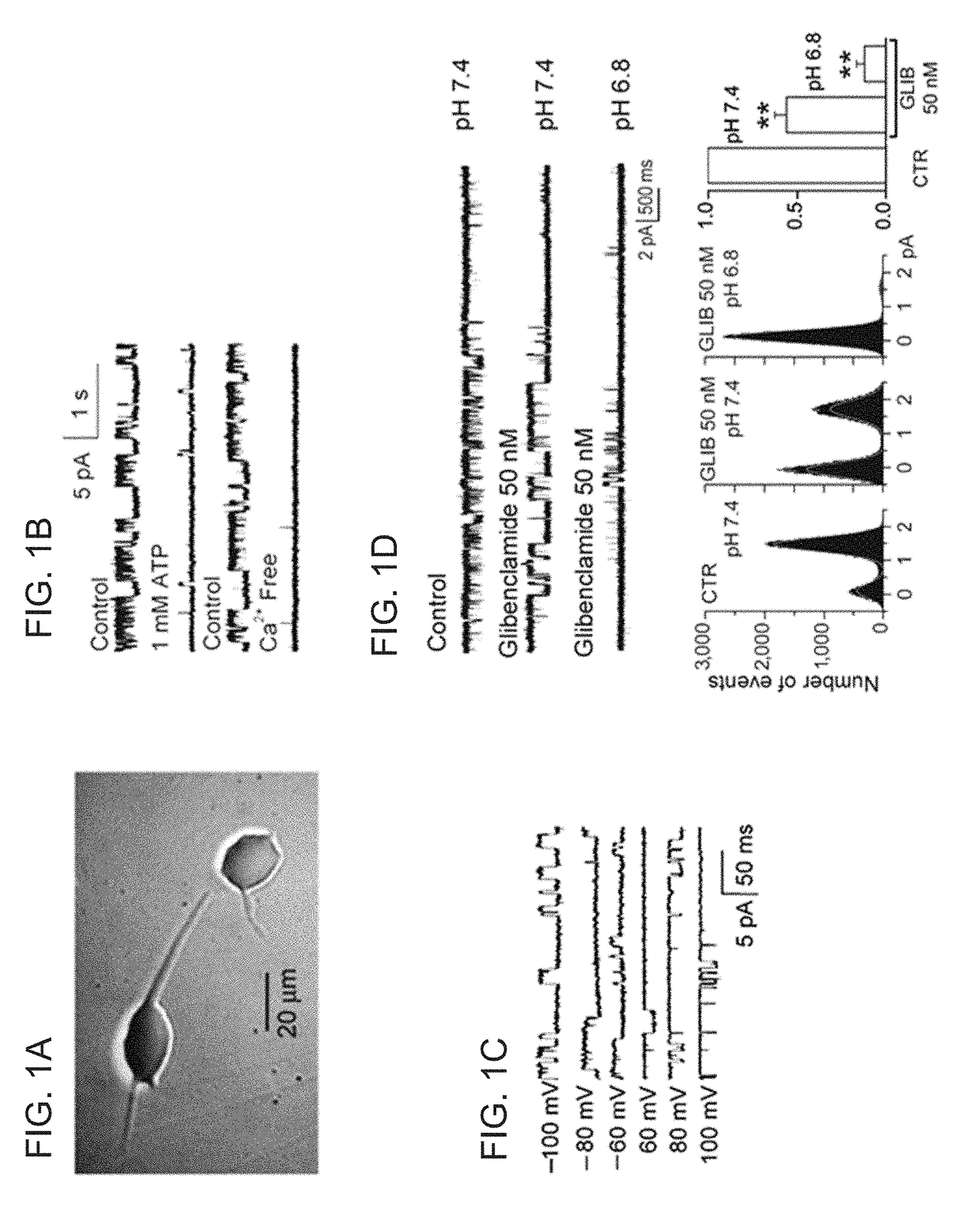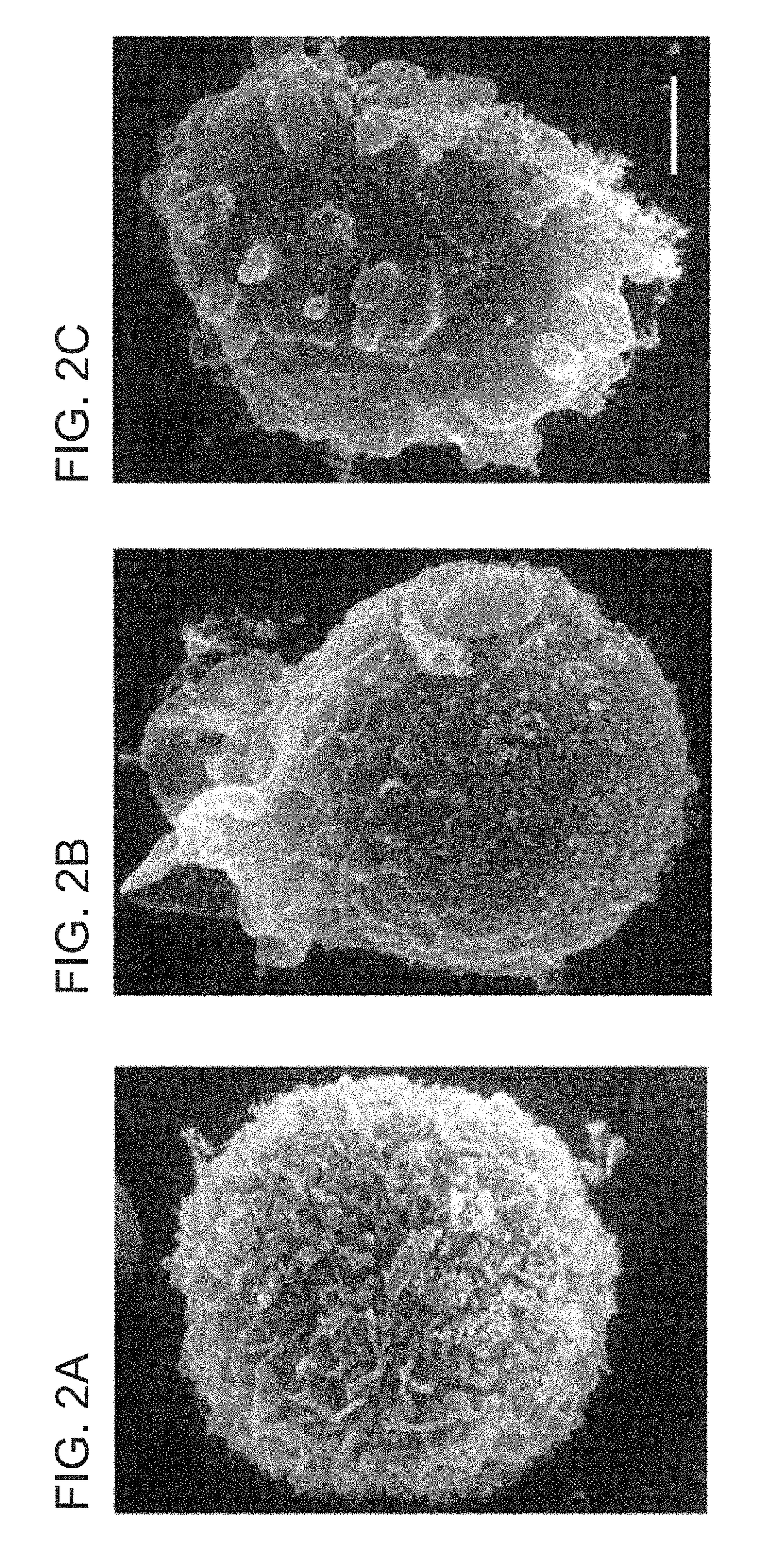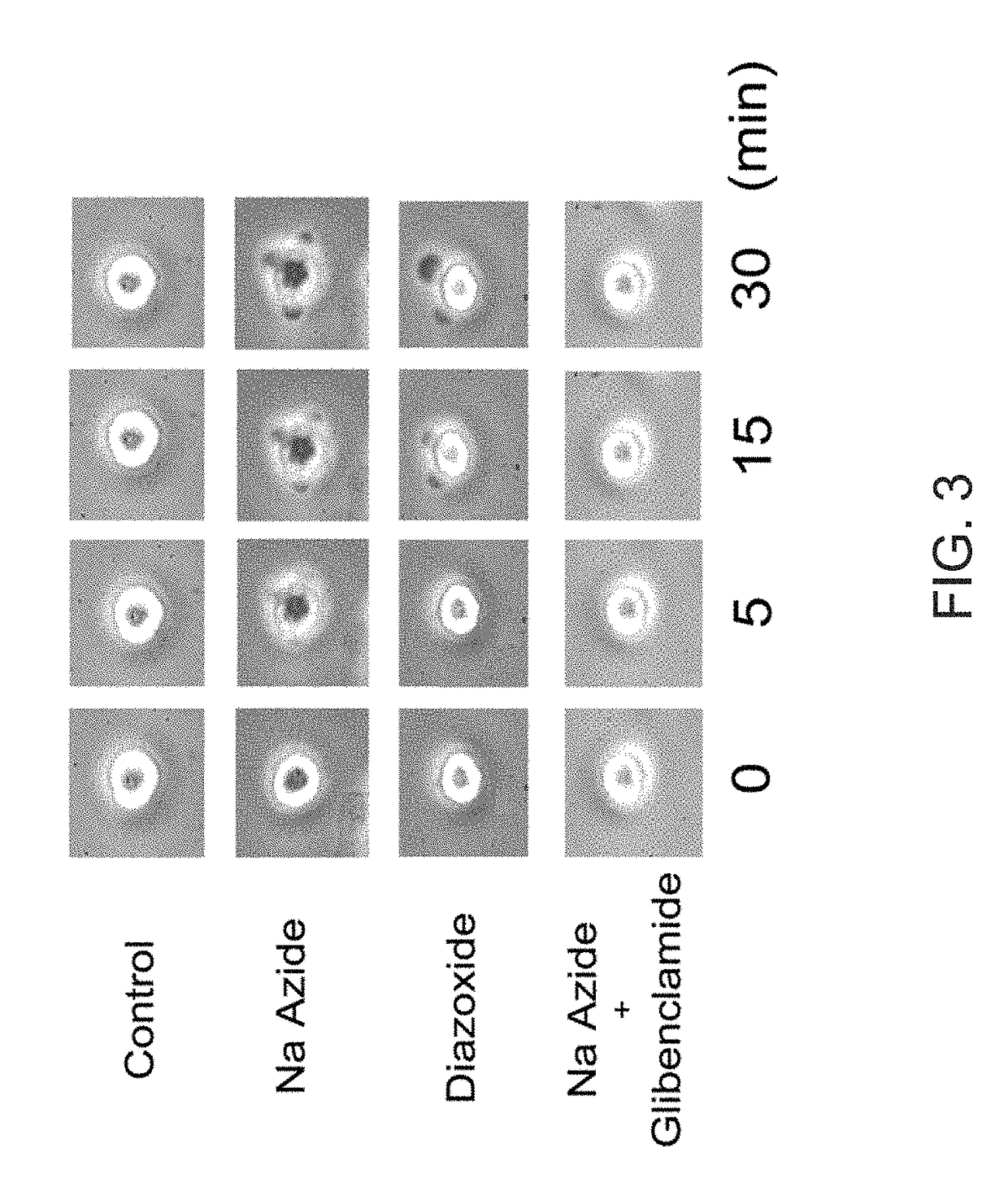Targeting ncca-atp channel for organ protection following ischemic episode
a technology of organ protection and ischemic episode, applied in the field of cell biology, molecular biology, physiology, medicine, can solve the problems of serious and even life-threatening consequences, morbidity and mortality, and organ damage, and achieve the effects of preventing or reducing cytotoxic edema and/or ionic edema, preventing or reducing hemorrhagic conversion, and preventing depolarization of cells
- Summary
- Abstract
- Description
- Claims
- Application Information
AI Technical Summary
Benefits of technology
Problems solved by technology
Method used
Image
Examples
example 1
NCCa-ATP Channel—its Identification and Role in Cytotoxic and Ionic Edema
[0420]The original discovery of the NCCa-ATP channel involved reactive astrocytes from the hypoxic inner zone of the gliotic capsule in brain (Chen and Simard, 2001; Chen et al., 2003). Since then, this channel was also identified in neurons from the ischemic core following middle cerebral artery occlusion (FIGS. 1A-1D) (Simard et al., 2006). This channel is permeable to all inorganic and some organic monovalent cations, it requires intracellular Ca2+ for activation, and opening is triggered by depletion of intracellular ATP (Chen and Simard, 2001). A critical feature of the NCCa-ATP channel is that it is regulated by sulfonylurea receptor type 1 (SUR1) (Chen et al., 2003), just like the KATP channel in pancreatic β cells. Thus, it is blocked by sulfonylurea compounds (glibenclamide), non-sulfonylurea compounds (repaglinide), and is opened by SUR1-activators (a.k.a., K+-channel openers-diazoxide). Although the ...
example 2
Rodent Model of Cervical SCI
[0425]The cervical contusion SCI model that is used is that of Soblosky et al. (2001). Adult female Long-Evans rats are anesthetized (Ketamine and Xylazine) and a hemilaminectomy is made at C4-5 to expose the dura. A hemi-cervical spinal cord contusion is created using a blunt force impactor (see details below “The model of contusion SCI”). This model of SCI is appealing because it yields a gradable lesion, it spares part of the opposite hemi-cord, favoring retention of key neurological functions such as micturition, and it disrupts ipsilateral fine forepaw neurological function, which is more sensitive to injury / recovery than cruder hindpaw / hindlimb function. Most importantly, the cervical location of the injury is ideal for modeling the typical human injury.
[0426]To generate the injury for the data shown here, the impactor was activated using a 10-gm weight dropped from 2.5 cm. This insult is sufficient to produce a severe albeit incomplete SCI with pro...
example 3
Hemorrhagic Conversion
[0432]In stroke, hemorrhagic conversion has been attributed to activation of matrix metalloproteinases (MMP) (Gidday et al., 2005; Justicia et al., 2003; Lorenzl et al., 2003; Romanic et al., 1998). In specific embodiments, in a SCI model glibenclamide was tested to determine whether it would inhibit MMPs and thereby prevents hemorrhagic conversion. This was studied directly using zymography of recombinant MMPs. Zymography showed that gelatinase activity assayed in the presence of glibenclamide was the same as that assayed without it, although gelatinase activity was strongly inhibited by commercially available MMP inhibitor II (FIG. 10). This finding made it unlikely that glibenclamide was acting directly via MMP inhibition to decrease the hemorrhage in SCI, and indicated instead that a mechanism involving SUR1-regulated NCCa-ATP channels in capillary endothelium was involved.
[0433]Given the significant reduction in hemorrhage with glibenclamide, we sought to ...
PUM
 Login to View More
Login to View More Abstract
Description
Claims
Application Information
 Login to View More
Login to View More - R&D
- Intellectual Property
- Life Sciences
- Materials
- Tech Scout
- Unparalleled Data Quality
- Higher Quality Content
- 60% Fewer Hallucinations
Browse by: Latest US Patents, China's latest patents, Technical Efficacy Thesaurus, Application Domain, Technology Topic, Popular Technical Reports.
© 2025 PatSnap. All rights reserved.Legal|Privacy policy|Modern Slavery Act Transparency Statement|Sitemap|About US| Contact US: help@patsnap.com



